Top 13 for 2013: The Best Cameras, Lenses and Technologies of the Year
posted Wednesday, December 11, 2013 at 6:46 AM EST
The Imaging Resource 2013 Camera of the Year awards

Few organizations shoot with as many cameras and lenses as we do in the course of a year and fewer still conduct the same level of objective testing. We've pretty well seen it all when it comes to image-capture technology and devices, so it takes a lot for us to recognize a camera or lens in our annual awards. The cameras and lenses we recognize truly represent the very best of what the market has to offer in each category, as determined by our extensive laboratory testing and real-world usage.
It is often hard to pick just one Camera or Lens of the Year in each category, though. For this reason we present our Product of Distinction awards to the one or two other products that also stand out from their peers. While these cameras and lenses don't receive a Product of the Year award, it is a mistake to consider them mere runners-up. You'll note that while some categories contain a couple of Products of Distinction, others have one or none. Only products that truly stand out from the field receive this recognition.
We have no interest in filling a number of fixed, preordained slots for these awards, but instead want to respond intelligently to the rapid evolution of the photo industry. Our goal is to recognize truly exceptional products and developments in categories that remain meaningful and responsive to the market as it evolves. To that end, we have added, removed and split categories, bringing the total to 13 this year.
2013 was a year of extraordinary development and evolution in the photography business. These are truly exciting times for photographers, perhaps without equal. There is no substitute for photographic ability and vision, but developments this year extended the boundaries of the possible and have made it easier than ever to take great photographs under challenging conditions. Read on to see what products made the grade for 2013!
Best Cameras of the Year
Camera of the Year, Overall Achievement: Sony A7R
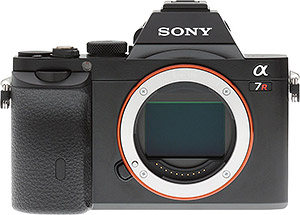
Selecting the winner of our Camera of the Year Awards for 2013 was an exceptionally difficult task: competition was intense, with strong entries across the board. In the end, though, the greatest difficulty we faced was in choosing between the closely-related Sony A7R and A7 mirrorless cameras. The duo share much of their design and together they completely demolish the status quo. We came very close to calling it a tie, but in the end, the Sony A7R's images swung it. With the higher-resolution sensor of the pair, the A7R's photos show razor-sharp detail comparable to a medium-format camera. Yet this is no medium-format body: along with its sibling, the Sony A7R is the smallest full-frame, fully-featured interchangeable lens camera on the market by a country mile.

We're thrilled that the age of the full-frame mirrorless camera is finally here and equally thrilled to name the Sony A7R our Best Camera of 2013! It's hard to overstate just what the Sony A7R means to full-frame shooters who aren't content to live with a single, fixed prime lens -- even a great one -- as in the Sony RX1. Until now, if you wanted both an interchangeable-lens design and a full-frame sensor with true through-the-lens (TTL) viewing, you needed to buy a big, bulky camera whose form factor was dictated by its mirror box. The high-resolution Sony A7R mirrorless camera changes everything. This full-frame ILC is discreet enough for the street shooter, yet it's capable of capturing astounding detail. And thanks to its huge full-frame sensor, the Sony A7R can keep on shooting with available light when smaller-sensored cameras would have you reaching for the flash.
Buy now: Adorama | B&H | Amazon
Camera of Distinction, Overall Achievement: Sony A7
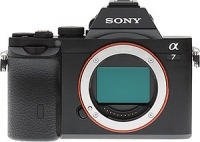
As we just mentioned, choosing between the Sony A7 and A7R was a tough task indeed. The plucky little A7 came very close to making it a two-way tie: it sports a hybrid autofocus system, offers greater burst-shooting performance, and has a significantly lower price tag, as well. If resolution isn't the be-all and end-all for you, then it's arguably the better choice. (And we should point out that we're talking about the difference between "merely" great resolution in the A7, and truly spectacular resolution in the A7R. Chances are, unless you're printing very large or making dramatic crops, the Sony A7's resolution will prove more than sufficient.) With the most affordable full-frame list price on the market, and as the joint-smallest full-frame TTL-viewfinder ILC to boot, the Sony A7 clearly deserves mention as one of 2013's best cameras!
Buy now: Adorama | B&H | Amazon
Camera of Distinction, Overall Achievement: Olympus E-M1
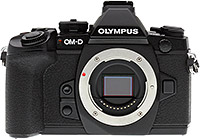
When we got our hands on the pro-oriented Olympus E-M1 mirrorless camera this past September, we immediately earmarked it as one of the year's best. Had Sony not launched its full-frame mirrorless duo just a month later, Olympus would probably have taken the top spot in our Camera of the Year Awards. The Olympus E-M1 builds on the already-great E-M5, 2012's Compact System Camera of the Year, making it even better than ever. Although the A7R just pipped it at the post, the E-M1 is still a very strong entry indeed, winning our 2013 Professional Camera of the Year award and taking a nod here as a Camera of Distinction.
Buy now: Adorama | B&H | Amazon
Technology of the Year
Camera of the Year, Best New Technology: Canon EOS 70D
for the Canon Dual-Pixel Hybrid autofocus system
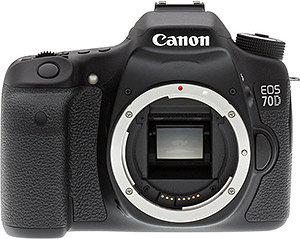
Imaging Resource was founded in 1998. After 15 years writing photography, it's rare to see a truly breakthrough technology. Yet that's exactly how we characterize the winner of this year's Technology of the Year award.
Contrast-detect autofocus has improved vastly over the years, but still struggles to track focus smoothly during video shooting. On-sensor phase-detect systems and Sony's translucent-mirror technology both enable phase-detect AF during video recording, but these solutions are restricted to a relatively large minimum lens aperture and a limited number of discrete AF points. These limitations mean that some sort of follow-focus accessory has been mandatory for serious videographers.
Until now.
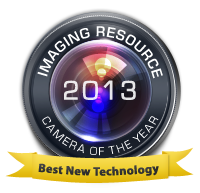
With their Dual-Pixel Autofocus system, Canon makes every pixel of the image sensor a potential phase-detect element. You can read the technical specifics in our Canon 70D review, but the bottom line is that Canon's Dual-Pixel AF system can form AF points anywhere within the 64% central area of the imager. (80% vertically and horizontally.)
For the first time, the videographer can easily, smoothly, and accurately rack focus between subjects almost anywhere within the frame. Not only can the AF system create a point anywhere within the frame, but the dimensions of these virtual AF points are flexible! This allows accurate autofocus at both extremely wide and very small apertures, something not possible with previous phase-detect AF systems.
The Canon 70D is the new bar against which all other video AF systems will be measured. In Imaging Resource's 15 year history, Canon's Dual-Pixel Autofocus technology is one of the few true breakthroughs we've witnessed, making it this year's Technology of the Year.
(You can read our in-depth technical write-up of the Dual-Pixel AF technology here.)
Buy now: Adorama | B&H | Amazon
Award of Distinction, New Technology of the Year: Pentax K-3
for the Pentax selectable anti-aliasing filter technology
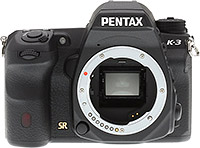
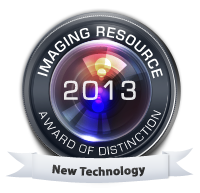
The last two years have witnessed a veritable exodus from Low-Pass Filters (LPFs) in the interchangeable-lens camera market. Dropping the LPF does make for crisper-looking images, but increases the risk of ugly moiré patterns in fabrics, architectural details and other subjects with repeating patterns. Sharper-looking images are great but if you end up with moiré in a subject, you're out of luck: it's a mathematical fact that there's no a priori way to distinguish digital aliasing from subject detail.
Clearly, what we need is a selective Low-Pass Filter: on when we need it, off when we don't.
This is exactly what Ricoh Imaging's Pentax division accomplished with their selectable anti-aliasing filter technology, first implemented in the superb Pentax K-3. Rather than use a separate optical LPF over the sensor, Pentax uses the image stabilization actuators to shift the sensor by very small, precise amounts during the exposure. This produces the same precisely controlled blurring as an optical LPF, but the anti-aliasing effect becomes optional!
Pentax's selectable anti-aliasing filter technology is a huge contribution to the field. Pentax engineers deserve enormous credit for this technology. More than a refinement of what's come before, it's one of the best examples of out-of-the-box, revolutionary thinking we've seen in the camera industry. The sensor-shift actuators are quick enough that this 'virtual low-pass filter' works all the way up to shutter speeds of 1/1000 second, making the feature pretty universally applicable. (Only a small percentage of subjects will be both moiré-prone and also require shutter speeds faster than 1/1000.)
(You can read our in-depth technical write-up of the selective Low-Pass Filter technology here.)
Buy now: Adorama | B&H | Amazon
Navigation
You've just finished the first page of our camera of the year our awards, but we're not done yet! Check out the rest of our awards below.
| The best cameras, lenses and technology of the year | The best entry-level cameras of the year |
| Overview | Best Pocket Cameras |
| Camera of the Year | Best Entry-Level DSLR Cameras |
| Best Technology | Best Entry-Level Mirrorless Cameras |
| Best Value Cameras | |
| The best enthusiast and pro gear of the year | The big, the small and the unusual |
| Best Professional Camera | Best Enthusiast Zoom Cameras |
| Best Enthusiast DSLR Cameras | Best Pocket Interchangeable Lens Camera |
| Best Enthusiast Mirrorless Cameras | Most Unique Cameras |
| Best Lenses |














